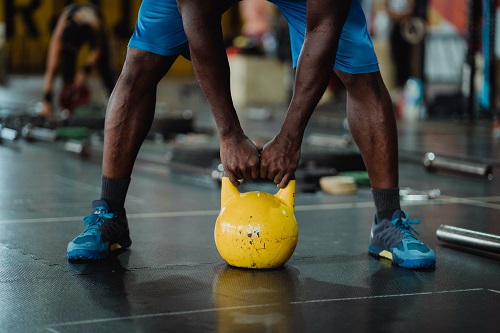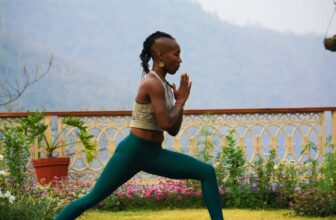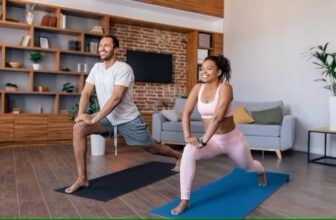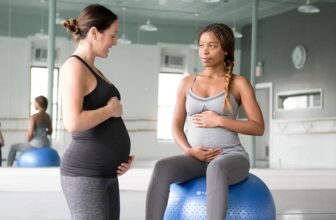Extending the Lifespan of Your Fitness and Training Shoes
Your shoes are a critical part of your performance. They absorb a lot of impact, so they wear down over time.
Whether or not your shoes have reached their peak mileage will depend on several factors, including your biomechanics and the environment you run in.
Previous neuroimaging studies, have shown that people value expert advice more than novice advice and that the ventral striatum tracks this valuation.
 Photo: Pexels / Ketut subiyanto
Photo: Pexels / Ketut subiyanto Alternate your workouts
You can get more mileage from running shoes by rotating them between pairs. Whether prepping for a race or just training, switching between shoes can help ensure the foam in your boots gets the rest it needs. Brands like Hoka One One acknowledge the advantages of such a rotation strategy, recognizing that giving the foam components periodic breaks contributes to prolonged durability and sustained performance across various running activities.
If you have more than one pair of workout shoes, rotate them daily. If you’re a runner, this is an essential step because it will allow the foam to decompress between each use, extending its lifespan.
For non-runners, it’s important to switch out your shoes regularly based on the type and intensity of your workout. Activities like elliptical training, walking, and cycling place less pressure on the boots so that you can get much more mileage out of them. In contrast, HIIT programs put a lot of compressive force on your shoes, which can wear them down quickly. Aim to switch out your workout shoes after three to six months of regular use.
Get fitted
Experts agree that getting a proper fit at a shoe specialty shop is vital to the longevity of workout shoes. A good fit is essential for running and training shoes since they’re meant to deal with more extreme movements than casual sneakers.
It is common knowledge among running shoe specialists to suggest replacing your running shoes every 300 to 500 miles. However, the average lifespan of a shoe is influenced by several factors, such as environment, weight, foot strike, and running mechanics. A 200-pound runner with a perfect stride can get more mileage out of a pair than a 100-pound runner with an over pronating gait.
Wearing activity-specific shoes for activities that aren’t suited for them is another common way to shorten their lifespan. For instance, runners should limit their training shoes to gym-focused activities like HIIT workouts and running and buy casual sneakers for jet-setting around town. This will help prolong their training shoes’ outsole, midsole, and upper construction by limiting their external exposure to harsh environments.
Take care of your shoes
You may extend the life of your shoes by taking proper care of them. If they’re soaked from rain or snow, take them inside and allow them to dry out completely. This will extend the life of your running and training shoes.
If your shoes are feeling flat and complex, this is a sign that they need to be replaced. Also, if you feel discomfort or aches after workouts, your shoes can no longer provide the proper support and cushioning.
If you’re racking up miles on your running or training shoes, save them for running only and use a different pair for walking around or workouts like HIIT that place more pressure on the feet. Your shoes will last much longer if you do this. Also, be sure to rotate your pairs – giving each pair a day or two of rest will ensure they last even longer. When you’re ready to buy a new pair, consult a running specialist to make an informed decision that best fits your needs.
Cross-train
Cross-training is a great way to boost your aerobic capacity and build strength, but it also helps reduce stress on your main muscle groups. This can help prevent overuse injuries like shin splints or rotator cuff tears and will help you train more efficiently.
Using different activities for your workouts can help extend the life of your shoes. This can be as simple as alternating between a heavier shoe for lifts and a lighter shoe for running or incorporating cross-training workouts that use different muscle groups than your primary activity (like jumping exercises or plyometrics).
If you’re measuring the lifespan of your exercise shoes in terms of time, it’s essential to consider the frequency, type, and intensity of your workouts. For example, if you’re a marathon runner, your shoes will wear out faster than someone who only runs casually. That’s because your shoes will spend much more time in contact with the pavement than someone who runs on a treadmill.
Keep them clean
Keeping your shoes clean is crucial for their lifespan. In addition to eliminating sweat, it also lessens odor and stops the formation of fungi and bacteria that could damage the material of your shoes.
Many different cleaning products are specifically designed for running and training shoes, but a few home remedies can also work. For example, a solution of water and dishwasher soap can gently scrub your shoes’ soles, especially if there are blood stains. Try soaking your boots for a few minutes in lukewarm water, then using a toothbrush to scrub the dirt away.
Lastly, remember that sunshine can gradually deteriorate the materials in your shoes, so store them somewhere cool and dry. Keeping your shoes in good condition will ensure they last longer and serve you well during workouts. Whether pounding the pavement or jumping around on box jumps, your shoes are a significant investment and deserve proper care.
Photo Credit: Pexel / Cottonbro






